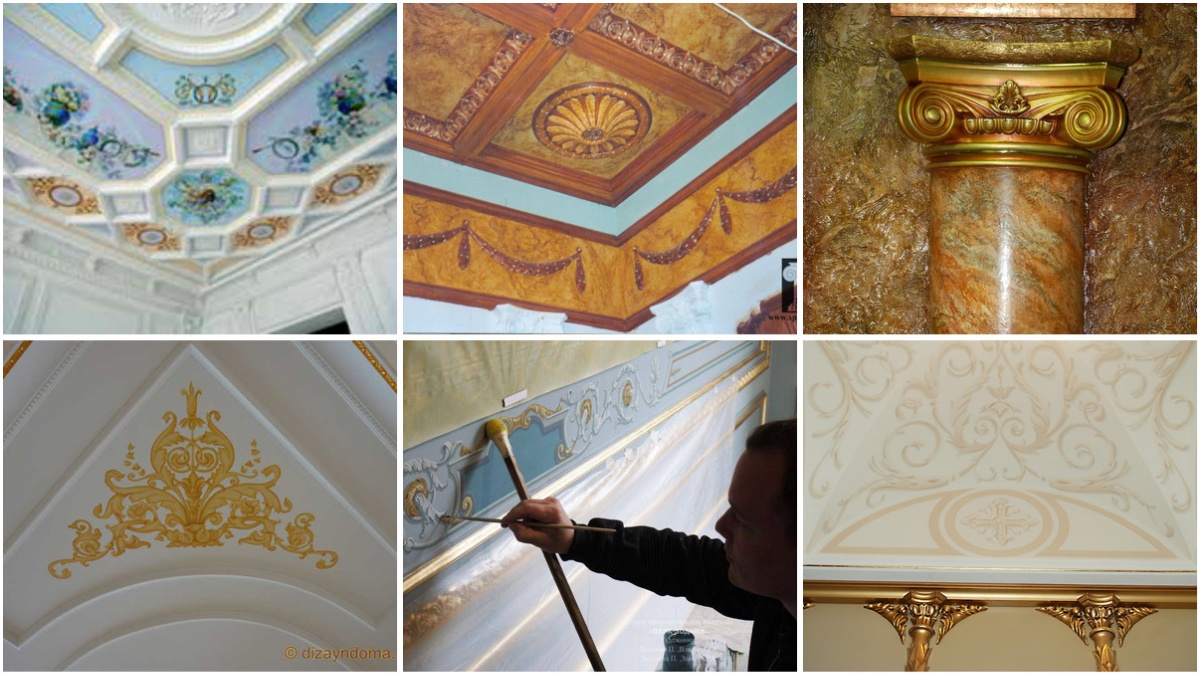
Faux finishing – highly professional painting finishing works, painting of stencils, painting imitating a pattern of stone or wood, faux columns, or another architectural artifact.
Pompeii Murals - style was characterized by small images and fake architectures which "enlarged" the rooms where they were painted (for a Renaissance example of this technique, see Galleria delle Prospettive at la Farnesina).

In the main hall on the first floor, Peruzzi showed his mastery of perspective laws by painting a series of fake balconies over the City of Rome and the surrounding countryside.
Trompe L'Oeil
Trompe L'Oeil (Translated from French to mean "To fool the eye" ) dates back to early Greek and Roman times, witnessed in Pompeii murals. It was revived in the Renaissance, where it was used in frescoes and ceiling murals to portray architectural perspective illusion.
Techniques by which it is customary to perform these works are divided into several types, depending on applying a pattern to the surface - splashing, rolling a pattern using a relief roller, pulling the panels, the so-called trimming, and patterning using a stencil.
A distinctive feature of stenciling is a unique pattern obtained in a rather short period of time. Stenciling can be performed even by people who do not have an art education.
Stenciling is a relatively easy way to introduce a certain look to a room without the client investing a fortune. You pick up colors you use in your design palette and then incorporate them into your custom stencils. It's better to hand cut all your stencils after enlarging them to the size that fits the location. You can sometimes use metallic paints as an accent or five or six colors creating a wonderful stencil design.